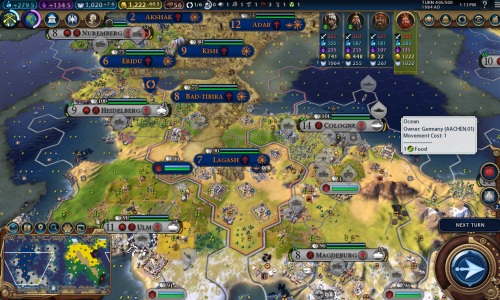planetfall
Emperor
Again, new to civ6 and gameplay is not as expected. I like many things about the vanilla game, but, but, but annoyed by gameplay.
My first game is a settler level and space/domination victory selected.
I expected since it was at the lowest level the game would be very easy. Here are the issues I run into:
-- crossbow is too strong on defense
-- I don't usually war monger, and yet it's impossible to keep up with the sci/turn of other civs
-- happiness has been reworked and can't just have many resources
-- city growth is extremely slow
-- too many build options before can start throwing out reasonable strength military with more power than other civs
-- city boundaries grow too slow so no place to put things like airports, harbors, etc
I find it more frustrating than fun. Is it just a huge learning curve, or does the game really have major play issues?
My first game is a settler level and space/domination victory selected.
I expected since it was at the lowest level the game would be very easy. Here are the issues I run into:
-- crossbow is too strong on defense
-- I don't usually war monger, and yet it's impossible to keep up with the sci/turn of other civs
-- happiness has been reworked and can't just have many resources
-- city growth is extremely slow
-- too many build options before can start throwing out reasonable strength military with more power than other civs
-- city boundaries grow too slow so no place to put things like airports, harbors, etc
I find it more frustrating than fun. Is it just a huge learning curve, or does the game really have major play issues?


